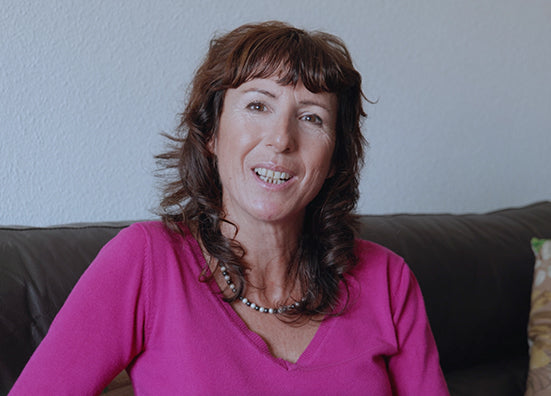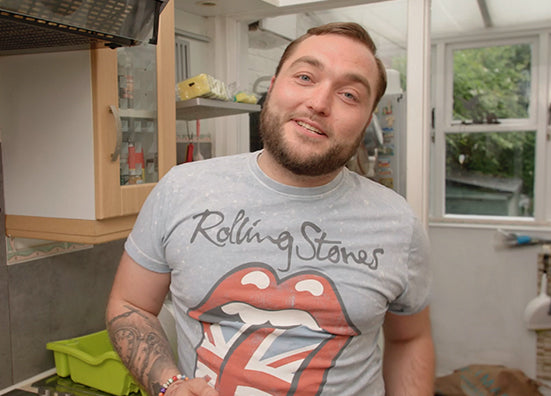Obsessive-Compulsive Disorder, or OCD, is more than a neat row of canned goods in the pantry or a meticulous organizational system. It's a disorder with a much deeper impact, capable of interfering significantly with a person's daily life and wellbeing.

Click here for the Clear Minds OCD Hypnotherapy Session
At its core, OCD involves a dance between obsessions and compulsions. Obsessions are intrusive and unwelcome thoughts or fears that cause significant distress, while compulsions are repetitive actions that one feels compelled to perform to alleviate the distress of obsessions. However, it's essential to remember that not everyone with OCD experiences both. Some people may only have obsessions, and this is just as valid a form of OCD as those who experience both obsessions and compulsions.
Common Obsessions and Compulsions in OCD
OCD can manifest in many different ways, but there are common themes within the disorder that can help someone identify that they, or someone they know, might be dealing with it. Some of these have become familiar through film and TV, but the simplistic way they are often portrayed doesn't really convey the full scope of the experience. Every manifestation comes with high levels of anxiety for the person experiencing it, and often causes great disruption to their lives.
1. Fear of Contamination or Germs
This is perhaps one of the most recognized obsessions. Alex, a young man I know, suffers with this and it takes the form of him feeling incredibly anxious about eating contaminated food, specifically food prepared by his mom. Despite knowing logically that his fear is unfounded, he finds it hard to shake off. Any food that he thinks she might have touched triggers an overwhelming anxiety. It's incredibly hard for both of them to deal with and no amount of reasoning helps.
2. Symmetry and Exactness Obsession
Emily, a bright college student, grapples with a different obsession. She has a compulsion for symmetry and exactness. For Emily, objects needed to be arranged in a certain order or alignment. A slightly skewed picture frame or an uneven number of books on the shelf causes an inexplicable unease, as if something terrible will happen if they are not corrected.
3. Intrusive Harmful Thoughts
Then there's Daniel, a loving father, who is tormented by intrusive thoughts of unintentionally harming his children. These thoughts shock and scare him, making him doubt his own character despite knowing he'd never intentionally hurt anyone. His fear is so profound that he avoids knives and other potential "weapons", causing significant disruption to his daily life.
4. Ritualistic Compulsions
Sophie, a friendly and artistic woman, finds herself trapped in ritualistic behaviors. She has an elaborate bedtime routine that involves checking the doors and windows multiple times, arranging items on her nightstand in a specific order, and repeating certain phrases before she can sleep. Any disruption escalates her anxiety, and she feels compelled to start all over again.
Postpartum OCD
This is a particularly underrecognized type of OCD that occurs after childbirth. New parents are often plagued by disturbing thoughts or images regarding their baby's safety, leading to extreme vigilance, excessive checking, or avoidance behaviors. (Note, this is very different from postpartum psychosis. With postpartum OCD, mothers know their thoughts are irrational but still feel anxious. They do not have a desire to harm their child; in fact, they are often horrified by these thoughts and go to great lengths to ensure their baby's safety. Postpartum psychosis, on the other hand, includes hallucinations (seeing or hearing things that aren't there), delusions (strongly held false beliefs), severe confusion, rapid mood swings, and severe agitation or restlessness. A common delusion in postpartum psychosis is the belief that the baby is evil or is destined for a special fate.
Crucially, women with postpartum psychosis may pose a risk to themselves or their babies, because they may act on their delusions or hallucinations. This is a stark difference from postpartum OCD, where mothers are afraid of their thoughts and actively avoid any perceived risk.

Click here for the Clear Minds OCD Hypnotherapy Session
It's essential to remember that these are just examples of how OCD might manifest. If you identify with any of these experiences or have different yet distressing obsessions or compulsions, don't hesitate to seek professional help. Each person's OCD journey is unique, and the first step towards getting better is understanding and acknowledging your own experience. As you can see, OCD is far from the humorous, quirk-filled portrayals in movies. It's a grueling struggle, where individuals find themselves caught in an exhausting cycle of distressing thoughts and time-consuming rituals.
How Do You Know If You Have OCD?
Diagnosing OCD isn't always straightforward because its symptoms often mimic those of other disorders. People often confuse OCD with Generalized Anxiety Disorder (GAD), as both involve chronic worrying. Yet, unlike GAD, OCD worries typically revolve around specific themes, and there's usually an urge to perform compulsive behaviors to alleviate the distress.
Key symptoms of OCD include having persistent, unwanted thoughts (obsessions), engaging in repetitive behaviors or mental acts (compulsions), and spending an hour or more per day on these thoughts or behaviors. If these symptoms cause significant distress and impact your ability to function, it could be a sign of OCD. A professional diagnosis is essential for accurate identification and treatment.
What Are the Current Treatment Options for OCD
Conventional treatment for OCD often involves a combination of medication and Cognitive Behavioral Therapy (CBT), specifically Exposure and Response Prevention (ERP). ERP involves gradually facing your fears, learning to tolerate the anxiety, and reducing your reliance on compulsions. Medication, typically Selective Serotonin Reuptake Inhibitors (SSRIs), can help manage symptoms but may come with side effects.
How Hypnotherapy Can Help with OCD
This is where hypnotherapy enters the scene. It's a complementary therapy that can work alongside traditional OCD treatments, helping to unlock a deeper level of healing. Through hypnosis, one can access the subconscious mind, the control center for fears and habits. Here, positive suggestions can help rewrite the anxious narrative that fuels OCD, encouraging a more peaceful, balanced perspective.
Hypnotherapy also encourages relaxation, an important counter to the constant tension and anxiety associated with OCD. It can help you manage stress better, reduce the intensity of obsessions, and build confidence to resist compulsions.
About Clear Minds OCD Hypnotherapy Session
At Clear Minds, we believe in empowering individuals to regain control over their lives. Our OCD hypnotherapy session aims to soothe the anxious mind, equipping you with tools to navigate through the fog of obsessive-compulsive thoughts and behaviors. Guided by our qualified hypnotherapists, each session is a step towards a life less dictated by fear and more driven by peace and self-understanding.
To learn more about our services and how they can help you or a loved one manage OCD, please visit our website.
Remember, with patience, understanding and the right help, managing OCD is within your reach. You are more than your fears, more than your compulsions, and most importantly, you are not alone in this journey.













